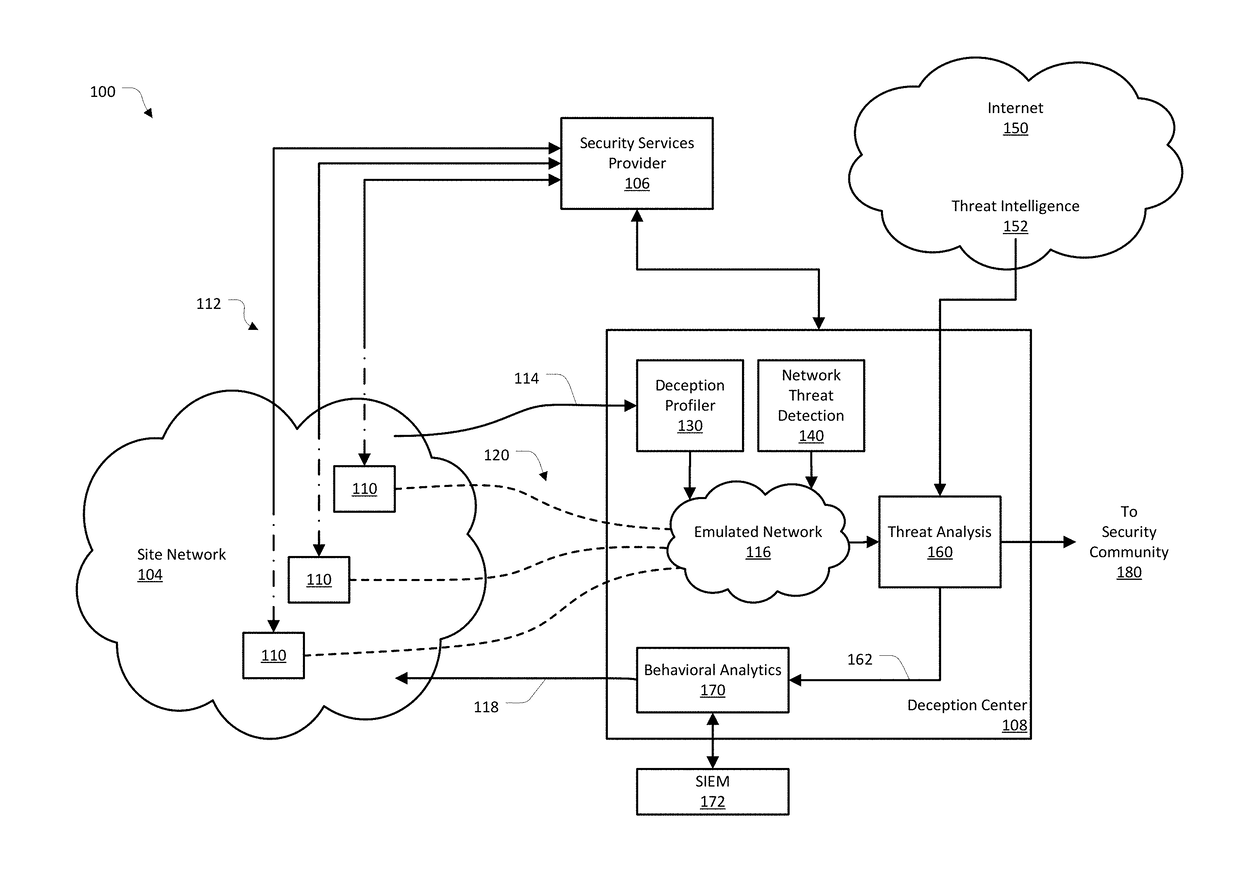Detecting security threats by combining deception mechanisms and data science
- Summary
- Abstract
- Description
- Claims
- Application Information
AI Technical Summary
Benefits of technology
Problems solved by technology
Method used
Image
Examples
Embodiment Construction
[0033]Network deception mechanisms, often referred to as “honeypots,”“honey tokens,” and “honey nets,” among others, defend a network from threats by distracting or diverting the threat. Honeypot-type deception mechanisms can be installed in a network for a particular site, such as a business office, to act as decoys in the site's network. Honeypot-type deception mechanisms are typically configured to be indistinguishable from active, production systems in the network. Additionally, such deception mechanisms are typically configured to be attractive to a network threat by having seemingly valuable data and / or by appearing vulnerable to infiltration. Though these deception mechanisms can be indistinguishable from legitimate parts of the site network, deception mechanisms are not part of the normal operation of the network, and would not be accessed during normal, legitimate use of the site network. Because normal users of the site network would not normally use or access a deception ...
PUM
 Login to View More
Login to View More Abstract
Description
Claims
Application Information
 Login to View More
Login to View More - R&D
- Intellectual Property
- Life Sciences
- Materials
- Tech Scout
- Unparalleled Data Quality
- Higher Quality Content
- 60% Fewer Hallucinations
Browse by: Latest US Patents, China's latest patents, Technical Efficacy Thesaurus, Application Domain, Technology Topic, Popular Technical Reports.
© 2025 PatSnap. All rights reserved.Legal|Privacy policy|Modern Slavery Act Transparency Statement|Sitemap|About US| Contact US: help@patsnap.com



